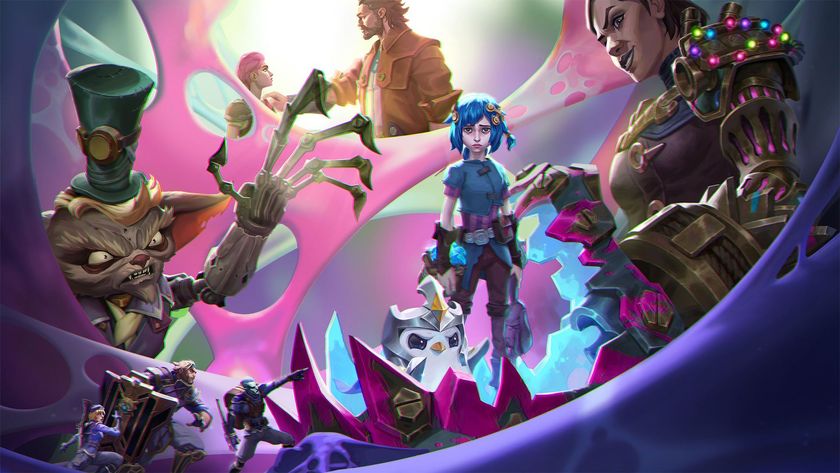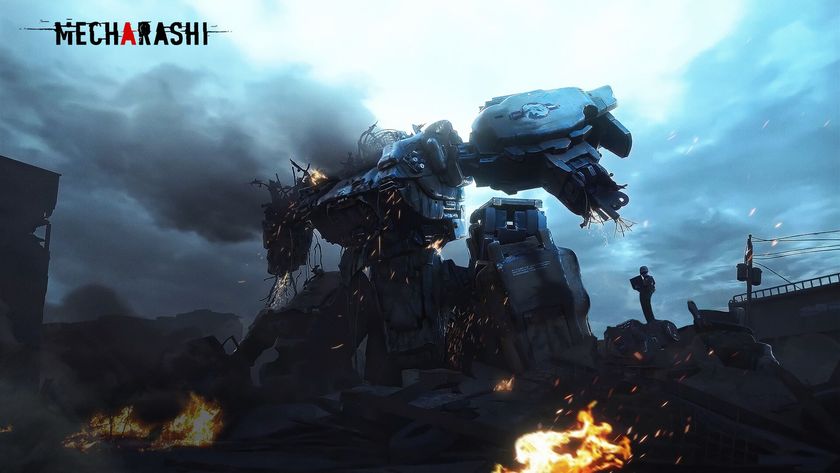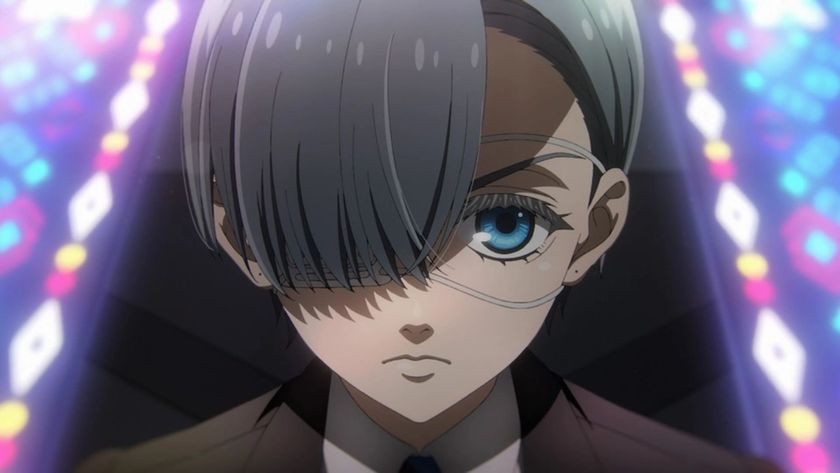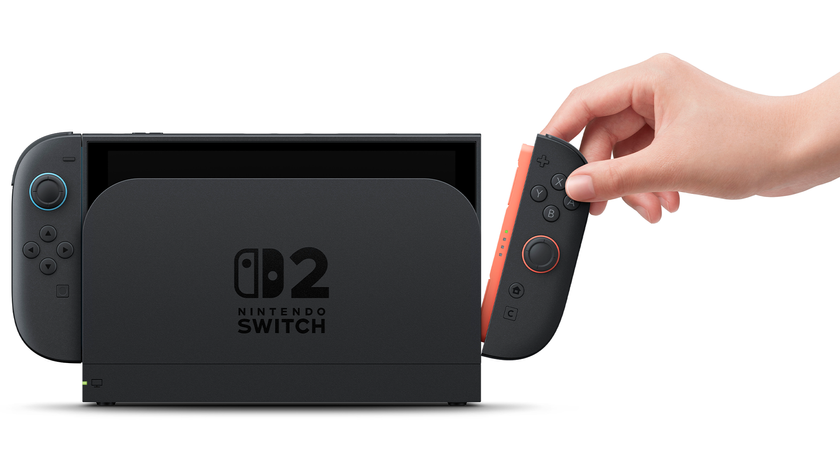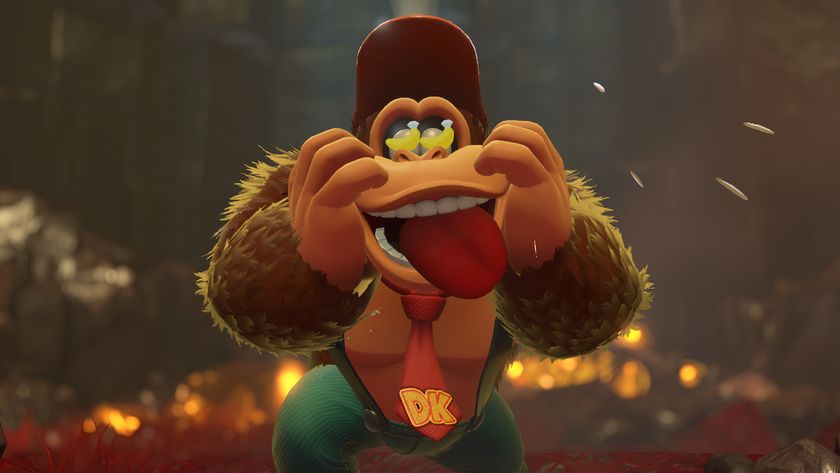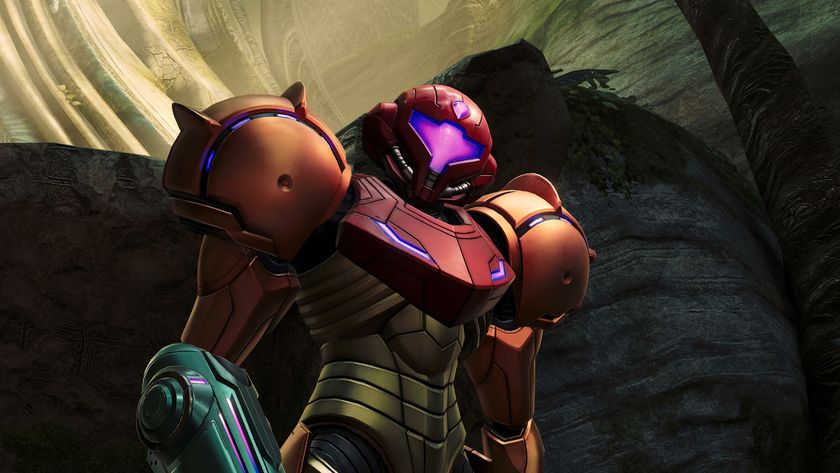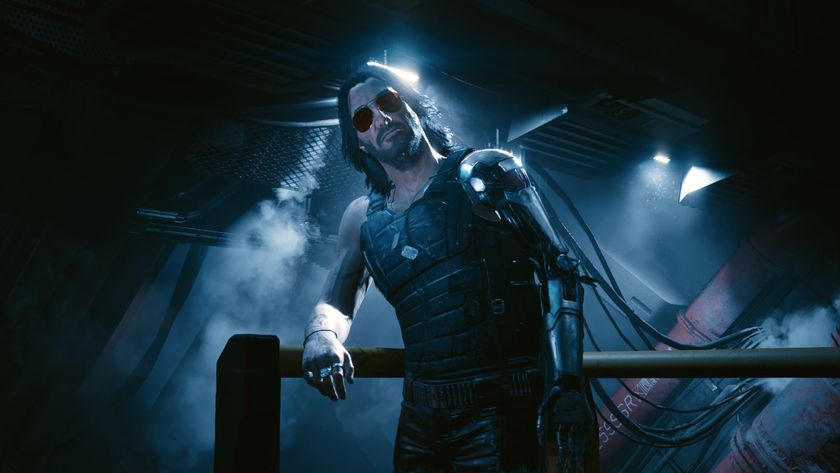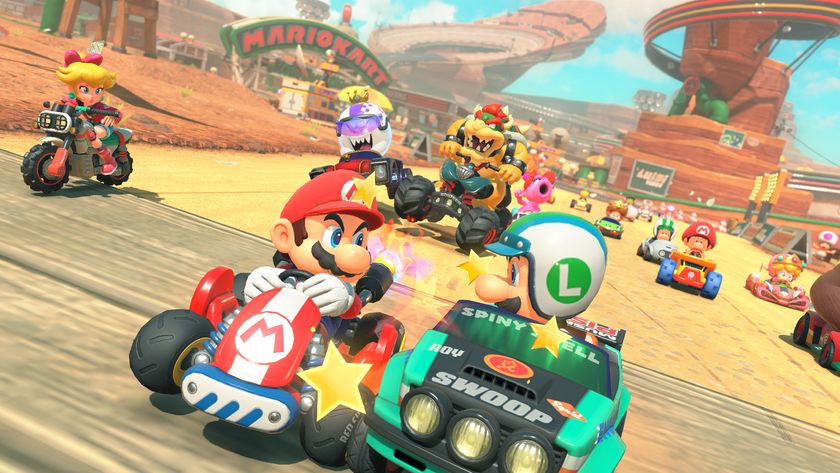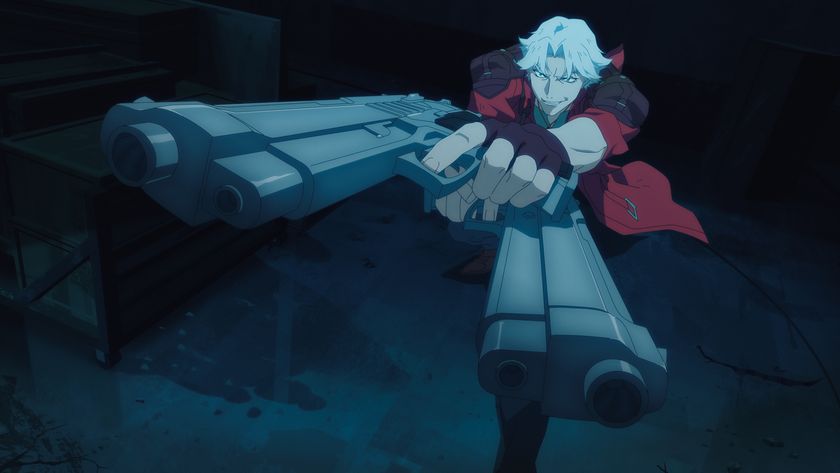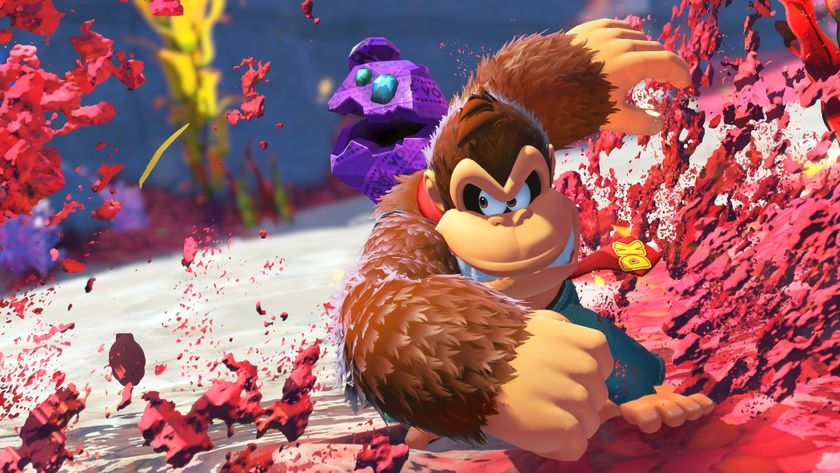BattleForge is real-time strategy stirred into a collectable card game with fantasy creatures of all shapes and sizes for ice cubes. How does this delicious blend of fantasy RTS and nerdy card game work? Instead of gathering resources and researching a tech tree, you’ll forge and tinker with your deck before taking it into battle. To get everything you want you’ll have to trade, barter and probably purchase a few extra booster packs (with real money), but that means that everyone will have a different deck. Here’s what a card looks like:
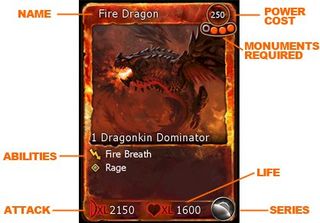
Above: Keep reading and this will make more sense
Your deck is composed of 20 of these colored cards in slots along the bottom of the screen:
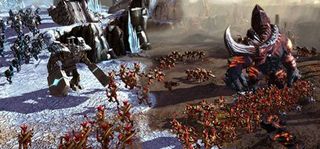
Above: We don’t have the screen, so just imagine 20 cards in a row at the bottom. Good, that’s what it looks like
These “cards” can be creatures, buildings or spells and are divided into four elemental flavors of fire, frost, nature and shadow (aka. red, blue, green and purple). Each card has a certain number of colored monuments you must control and a magic power cost associated with it, but once you have those, all you have to do is click on it.
Power continually flows into your reserves, but you can increase the flow by capturing power wells around the map or by killing off the units under your control. An extinguished card’s power will slowly filter back into your reserves, so you’ll never be left unable to fight, no matter how much of a beating the enemy’s fire dragon belches out.
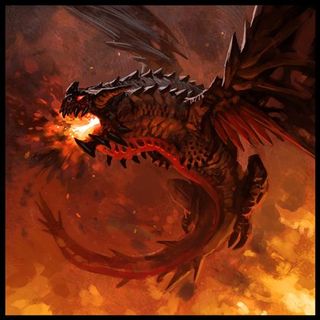
Above: Concept art for the scorchy fire dragon
Monuments are a bit more difficult to acquire. They’re peppered sparsely over the map, and to claim them you have to destroy any nearby defenses and then pick the color you want it to represent. Low-level creatures, like Master Archers or a Frost Mage, might require only one blue monument and can be summoned at the start of the match. High-level creatures, such as a Dreadnaught or Skyelf Commander, require you to possess up to four monuments of the same color, as well as having a significantly higher power cost.
Sign up to the 12DOVE Newsletter
Weekly digests, tales from the communities you love, and more
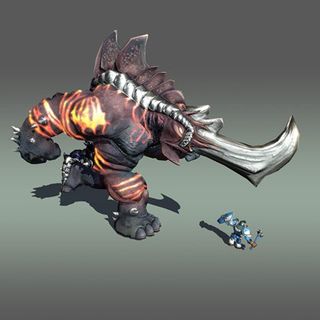
Above: Larger cost often means larger creature. Larger creature means army-leveling skills and attacks
